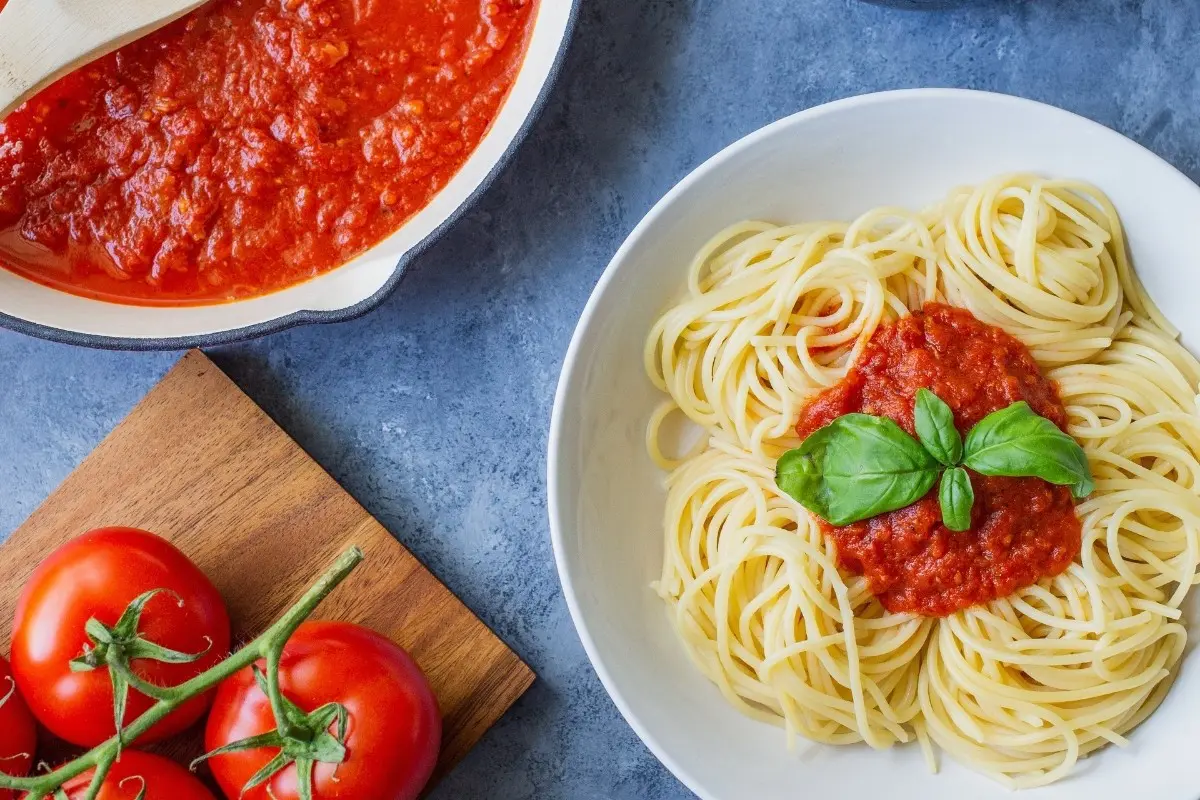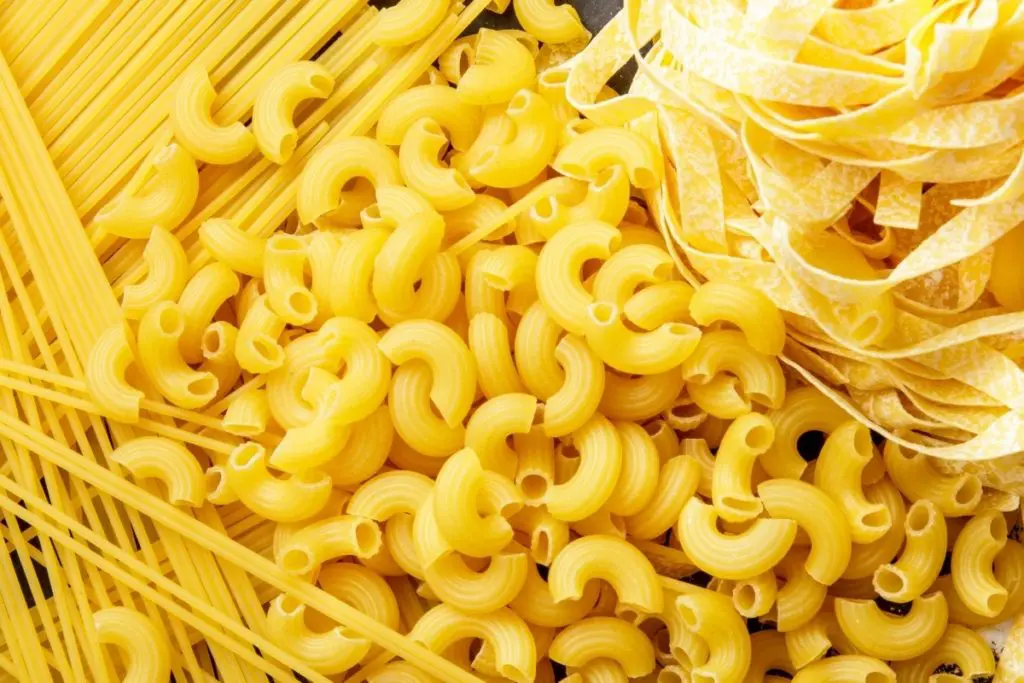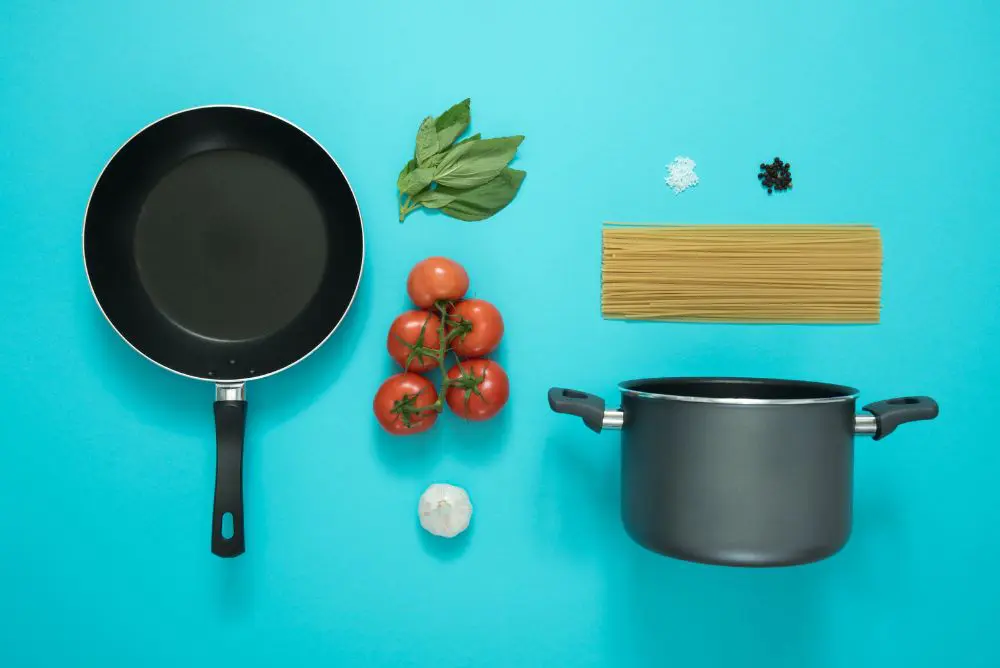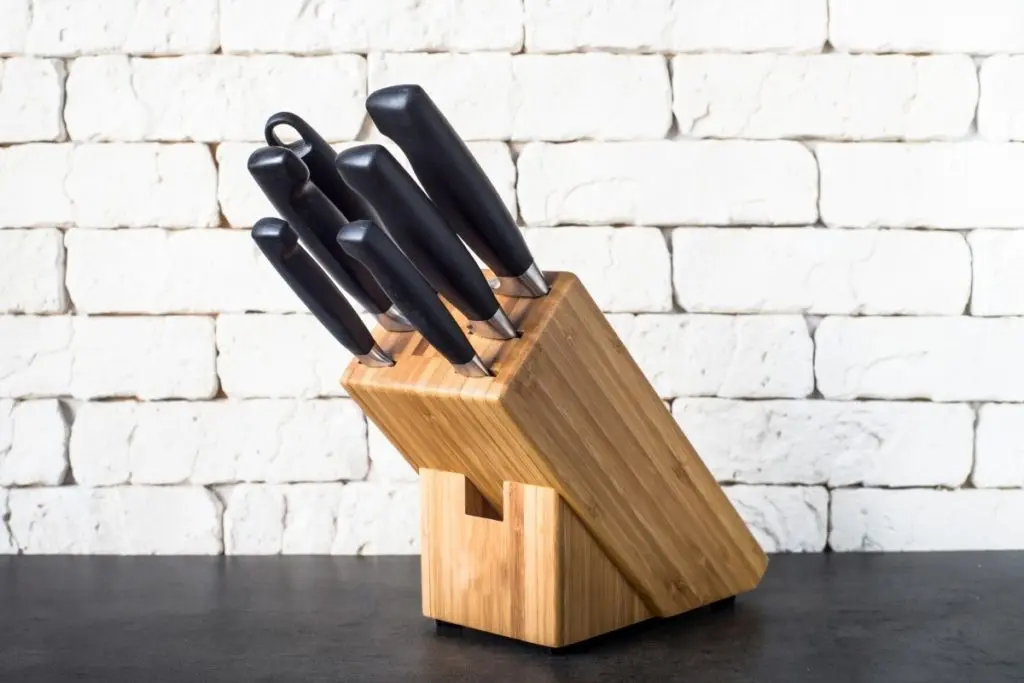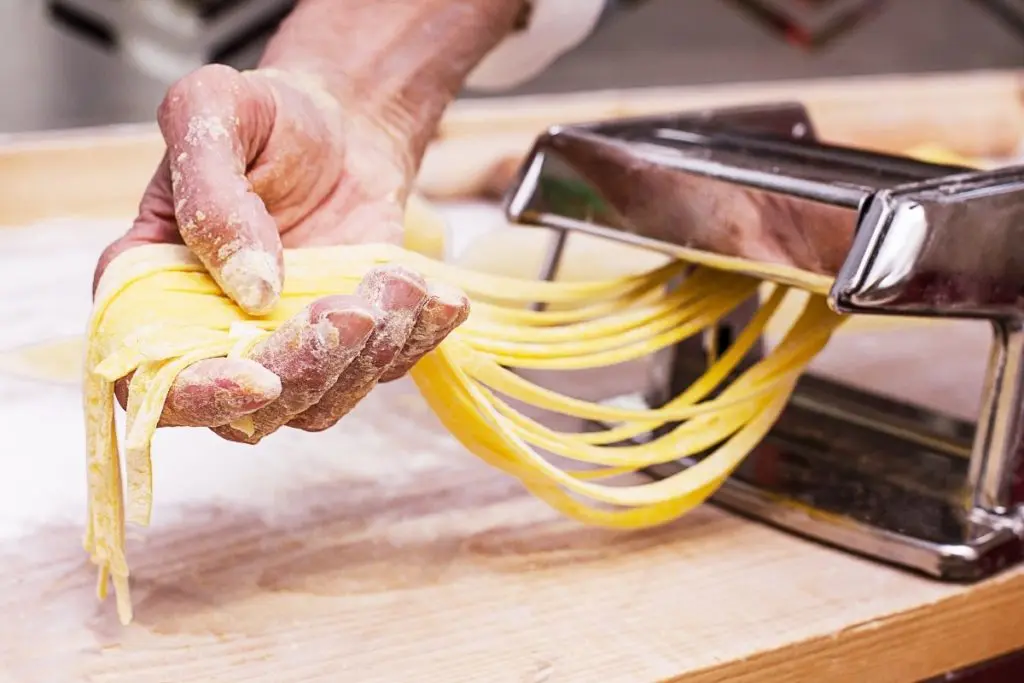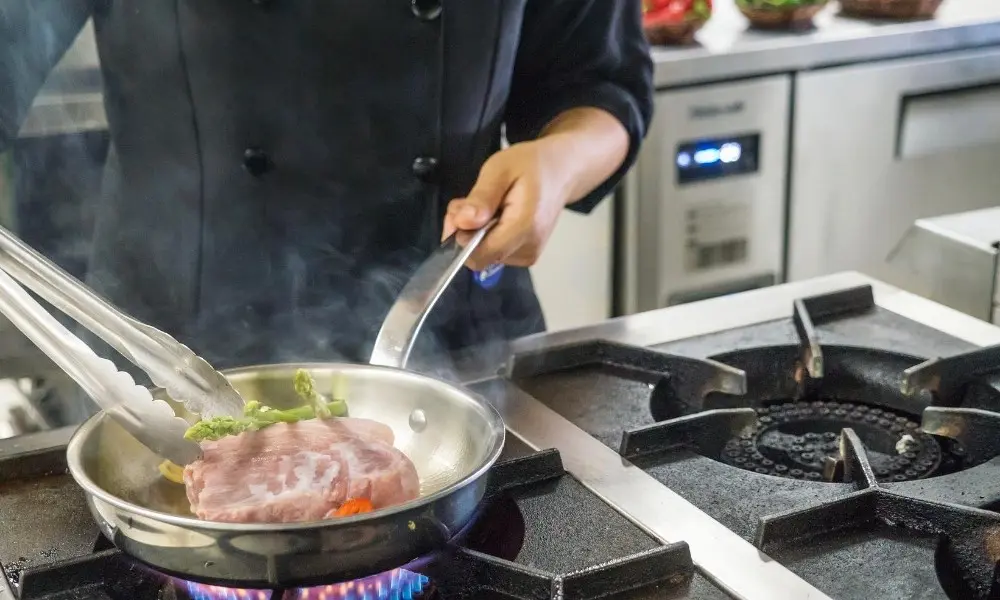We’re familiar with the classic pasta sauces: marinara, alfredo, and pesto. They’re considered global staples for types of pasta sauce, and for good reason. These are delicious additions to any pasta dish that can make it unique and unforgettable. While these pasta sauce types are some of our favorites, there are countless others worth mentioning. Have you ever wondered about the incredible sauce coating your seafood pasta? Maybe you’ve considered trying to make your own version of the red sauce in your restaurant-style ragu.
With as many different sauces are available to you, it’s easy to find one your taste buds will adore. You can try a classic or something new, make it from scratch or try a store-bought version. For your convenience, we’ve made a list of our favorite types of pasta sauce. Read and eat at your leisure — you’re in for a delicious meal ahead.
Types of Pasta Sauce
Check out these excellent pasta sauces, listed in no particular order. To start? Classic marinara.
1
Marinara Sauce
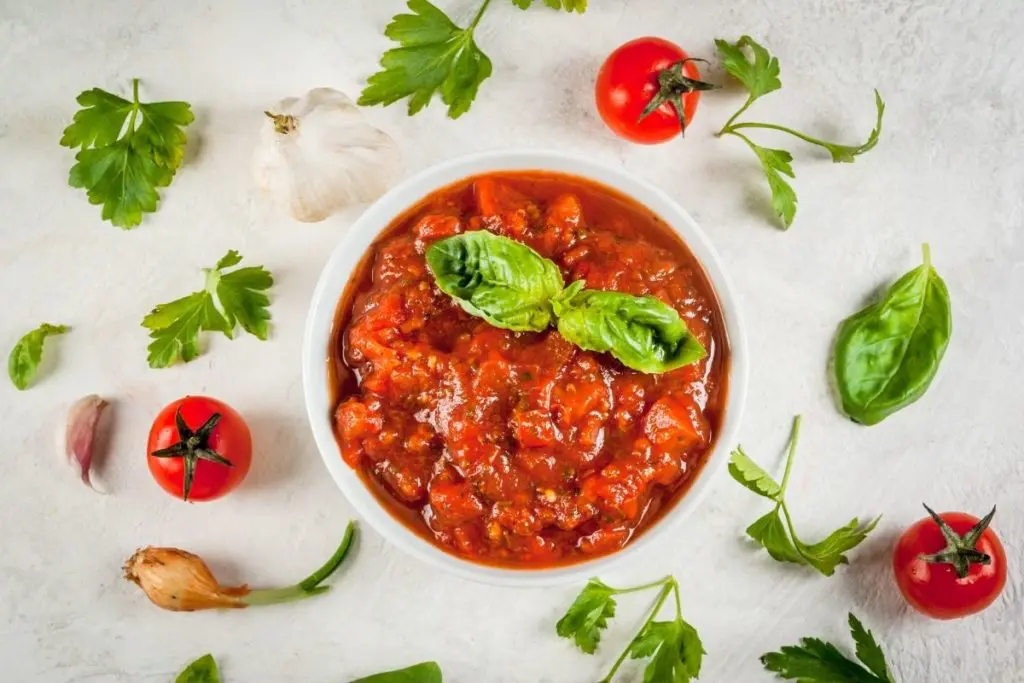
Origin: Southern Italy | Ingredients: Garlic, olive oil, herbs, and tomatoes | Popular Dishes: Spaghetti, meatballs, seafood, sausage
The story of marinara sauce began in the 16th century, after tomatoes were first introduced to Europe from South America. The sauce quickly took over the local culinary scene and began spreading from Southern Italy in Sicily and Naples throughout Europe and the rest of the world. Today, it’s one of the most popular types of pasta sauce around.
As one of the most common pasta sauces, it can be easy to dismiss marinara sauce. This tomato-based pasta sauce can be found across the world and is easy to make in your own home. There have been several takes on the classic marinara sauce, but there is a technically correct version. The sauce uses only a few ingredients: garlic, olive oil, herbs, and tomatoes. Onions are sometimes included, depending on where it’s made.
To make marinara sauce, you simply saute garlic in olive oil. Next, add tomatoes, water, and herbs. Let the sauce simmer until it’s reduced and thickened. Some people add basil while others add red pepper flakes. It’s an easy dish to personalize.
2
Alfredo Sauce
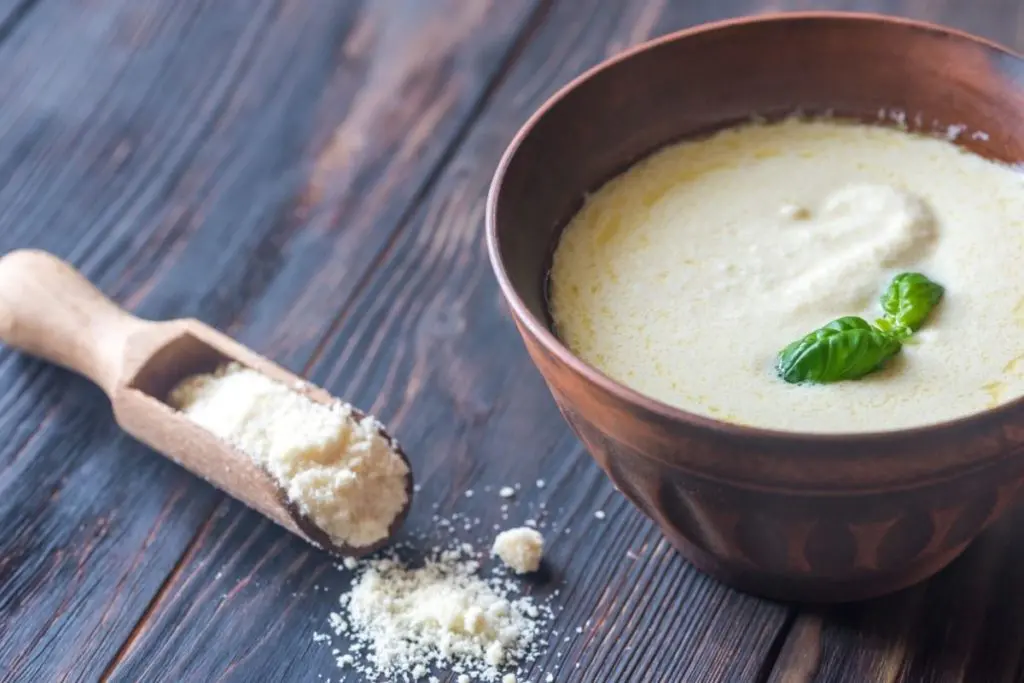
Origin: Rome, Italy | Ingredients: Butter, heavy cream, garlic, parmesan cheese, and parsley | Popular Dishes: fettuccine alfredo
This thick white sauce has made a name for itself among pasta dishes. Typically served with fettuccine pasta, alfredo sauce is a favorite among pasta lovers everywhere. Fettuccine alfredo originated as a simple pasta: white noodles, butter, and parmesan. It was fashioned by Alfredo di Lelio to serve his pregnant wife whose stomach sensitivities made it difficult to keep food down.
Two American silent film actors tasted the pasta in Italy and asked for the recipe to bring back to the United States. Fettuccine alfredo, as we know it today, took off in America. Chefs began adding chicken, shrimp, and a variety of cheese. They played with different amounts of flour, cream, and milk to achieve the thick white pasta sauce we’re familiar with today. Alfredo sauce is reasonably easy to make at home and requires only a handful of ingredients.
3
Bolognese (Ragu) Sauce
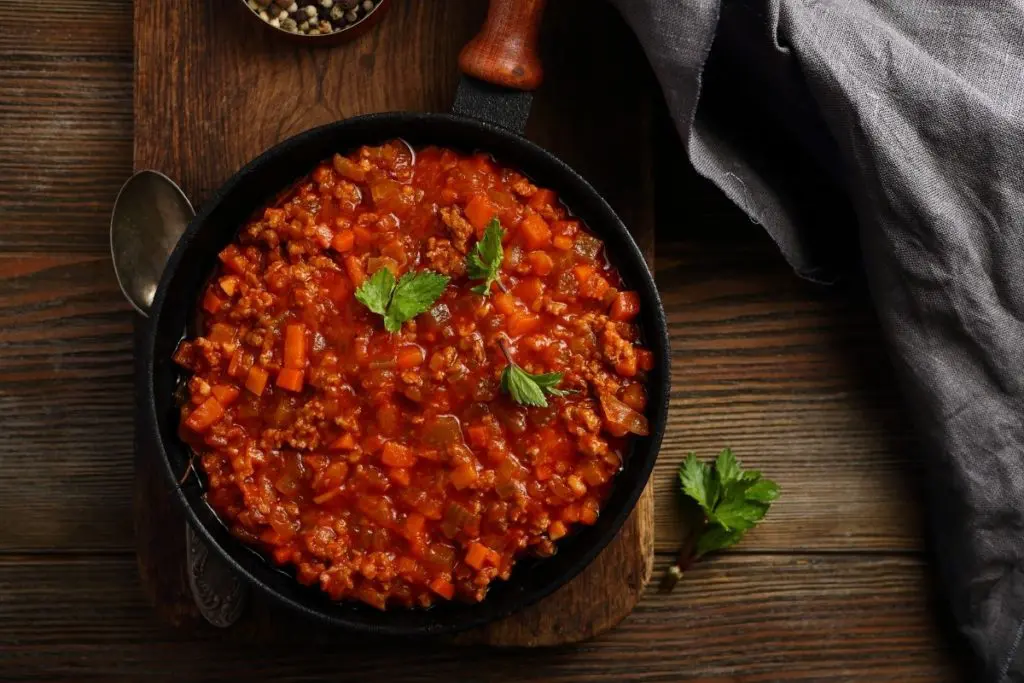
Origin: Bologne, Italy | Ingredients: Veal, pancetta, onion, butter, and carrot | Popular Dishes: Bolognese or ragu
Bolognese sauce, also known as ragu, is a common meat-based pasta sauce. Since its origin, there has been an increasing number of versions of this dish, both within Italy and across the globe. The earliest recording of the recipe is from a cookbook published in 1891.
Upon first glance, bolognese strongly resembles marinara sauce. However, dig a little deeper into the traditional recipe, and you’ll see the two bear little resemblance. Bolognese sauce comes together with lean veal filet, pancetta, butter, onion, and carrot. These ingredients are finely minced and cooked with butter until the meat browns. It’s then covered and cooked with broth for a short time. Renditions of this recipe include adding mushrooms or cream for a smoother taste. When complete, serve over tagliatelle pasta, although you can always choose your favorite pasta shape, and top with parmesan.
4
Amatriciana Sauce
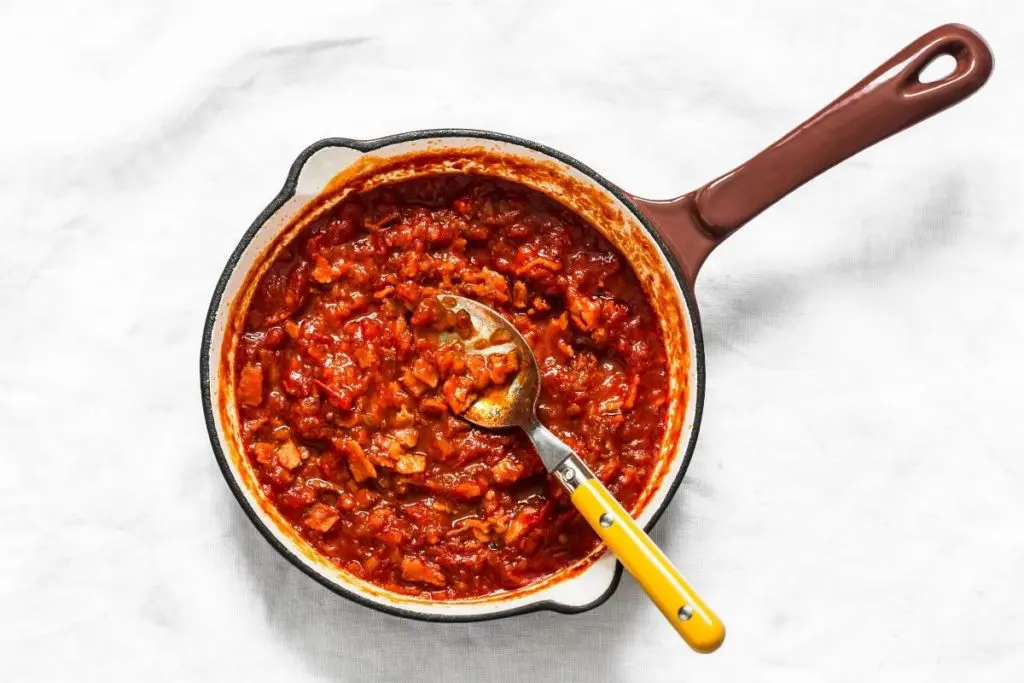
Origin: Amatrice, Italy | Ingredients: Guaniciale, tomato sauce, and pecorino | Popular Dishes: Bucatini all’Amatriciana
Unlike many Italian pasta sauces, the origin of Amatriciana sauce is difficult to trace. It’s thought to date back to the late 1600s, but countless variations on the dish make it difficult to pinpoint an origin. For years, the recipe was passed down orally through peasant families in Italy. Throughout the 19th and 20th centuries, this pasta sauce became exceptionally popular in Roman cuisine.
Amatriciana usually accompanies spaghetti noodles. However, bucatini is more common in Italy. The sauce combines sauteed garlic, olive oil, cheese, and guanciale. Some variations on the recipe include black or chili pepper. This red pasta sauce differs from marinara or bolognese due to its focus on chunky tomatoes. The ingredients are not all blended together, as you’ll see in other types of pasta sauce.
5
Pesto Sauce
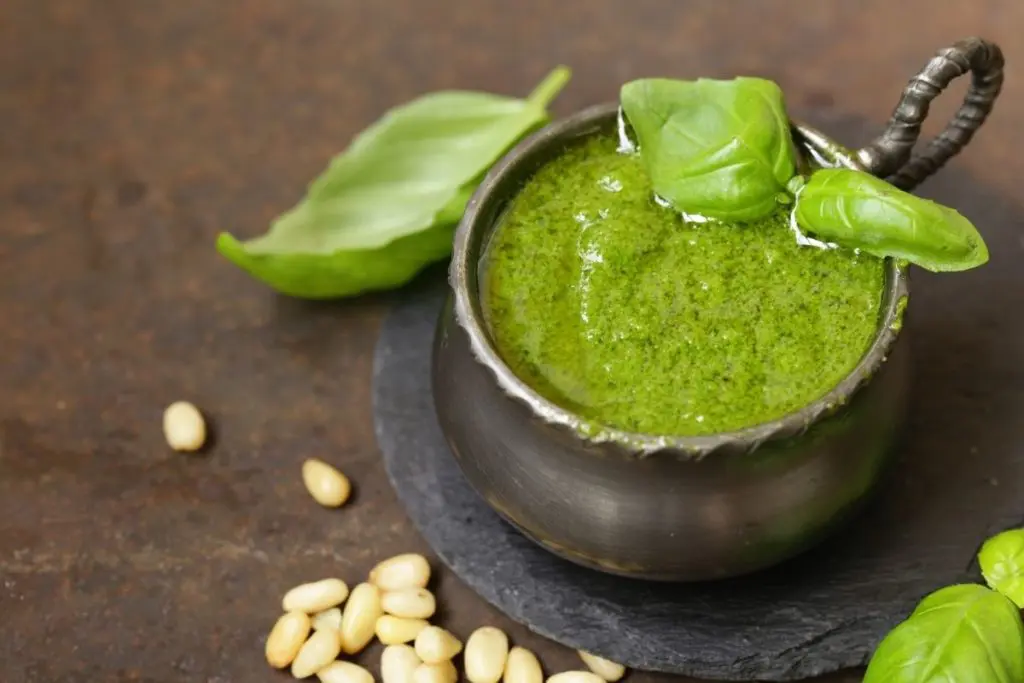
Origin: Genoa, Italy | Ingredients: Olive, oil, pine nuts, basil, garlic, and parmesan cheese | Popular Dishes: Pesto pasta
Pesto might be one of the easiest types of pasta sauce to make at home. Since its earliest days, pesto was always made with crushed garlic, basil, and olive oil. When the sauce spread to Europe, many began to incorporate pine nuts and parmigiano reggiano. The Liguria region of Northern Italy boasts a temperate climate and rich soil that makes it ideal for growing herbs. This fashioned it into the perfect home for a pasta sauce like pesto to be born.
Traditionally, the ingredients are crushed together using a mortar and pestle. However, a food processor works just as well for those making the sauce from scratch at home. Over the years, both professional and at-home chefs have made their own versions of pesto that include different kinds of cheese or walnuts instead of pine nuts. Feel free to get creative with this one. Serve over your preference of pasta noodle type.
6
Bechamel Sauce
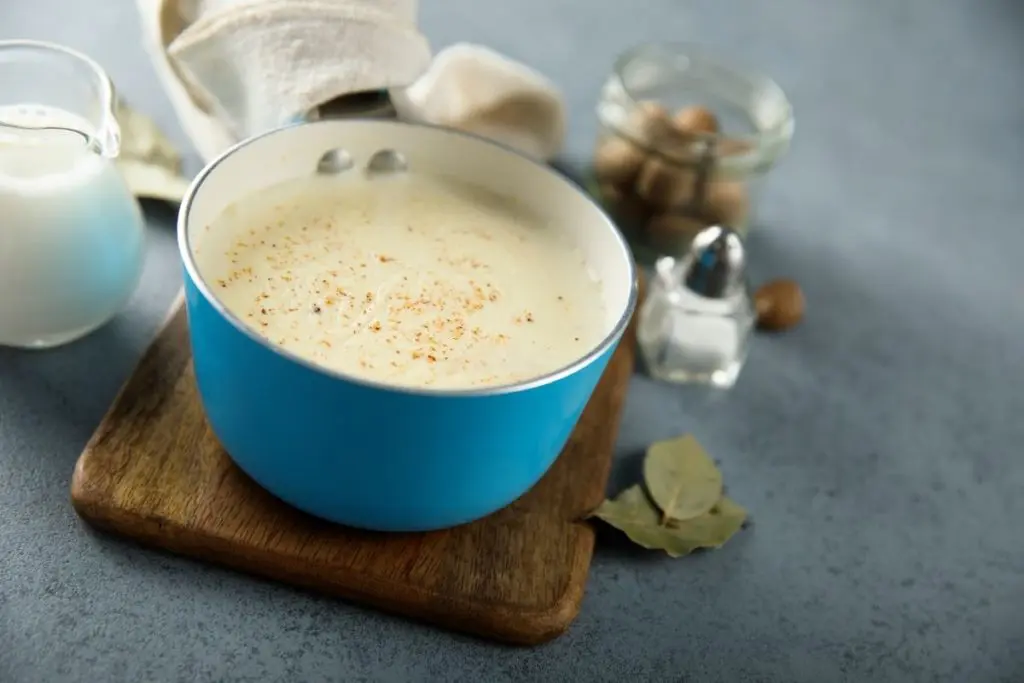
Origin: France | Ingredients: Butter, milk, and flour | Popular Dishes: Baked macaroni and cheese, sausage gravy, savory souffles
Also known as “white sauce,” bechamel sauce is a classic that is also surprisingly easy to make at home. Unlike most other sauces on this list that come from Italy, bechamel originates in France. It is considered a French “mother sauce” that is at the base of several dishes, including pasta. Anything from baked macaroni and cheese to gravy relies on white sauce to give it a rich, creamy texture and taste. Several casseroles will also use white sauce as their base instead of using large quantities of cheese. It’s easily adjustable to a non-dairy diet by using a plant-based milk alternative.
Adding this white sauce on top of pasta or as a base in other dishes offers a creamy and soft texture that might otherwise be hard to achieve. You can thicken it to your liking by adding flour.
7
Truffle Cream Sauce
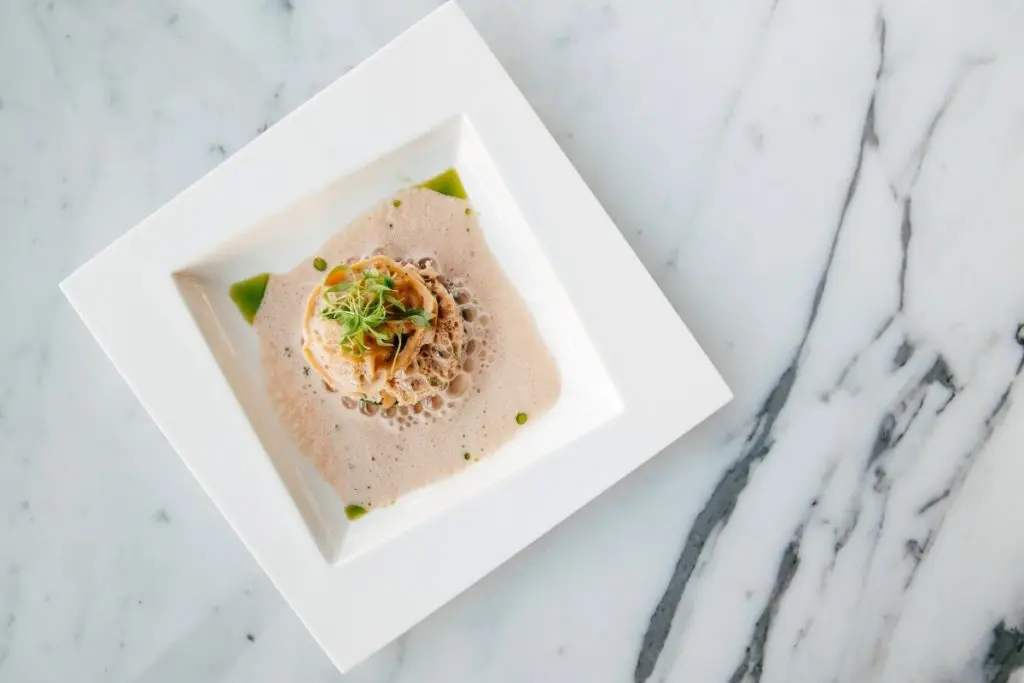
Origin: Throughout Italy | Ingredients: Heavy cream, truffle oil, butter, salt, pepper, and parmesan cheese | Popular Dishes: Ravioli, truffle fries, dipping sauce
Truffle cream sauce has an unmistakable smell and an even more unique taste. By using just a few ingredients, you can have a masterful sauce that is perfect for a number of pasta dishes and other recipes. Truffles are a kind of mushroom; however, they can be rather expensive if bought fresh. A simpler option is to use truffle oil. It usually lacks the complex flavors and smells of fresh truffles, but can easily be found in most grocery stores at a fair price.
Nevertheless, you shouldn’t worry too much because truffle oil offers a unique taste. It can create the ideal thick, creamy sauce when properly mixed with other ingredients. You can try using truffle cream sauce on fries, as a dipping sauce, or on ravioli for a more traditional dish.
8
Brown Butter Sauce
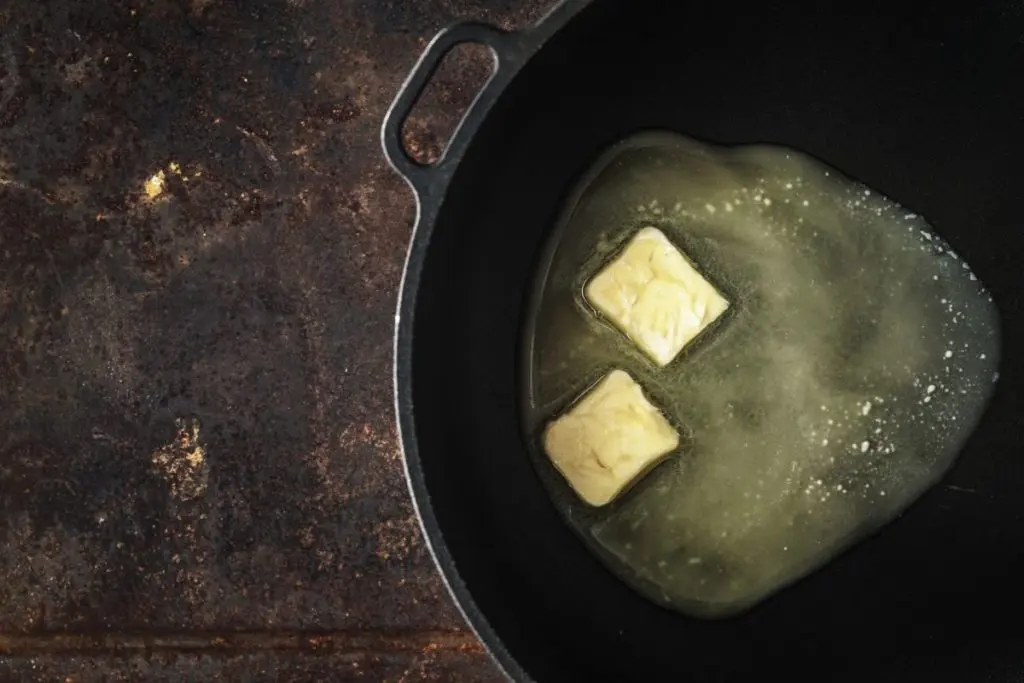
Origin: Unknown | Ingredients: Butter | Popular Dishes: Brown butter pasta
If you’re seeking an easy pasta sauce, you’ve come to the right recipe. Brown butter sauce is exactly what it sounds like. You use one ingredient, butter, and simply cook it down until it begins to brown. Next, top the browned butter over your pasta, add parmesan, or another topping of your choosing.
The simplicity of types of pasta sauce like this lends itself to versatility. You can saute with garlic, onion, or lemon. It’s excellent when served over spaghetti noodles with chopped tomatoes and spinach. Some recipes have called for peanuts to add a little something crunchy and salty to your pasta dish. Personalized brown butter sauce is a perfect option for a quick and easy dinner. It offers a nice change of pace compared to marinara or pesto pasta.
9
Red Wine Sauce
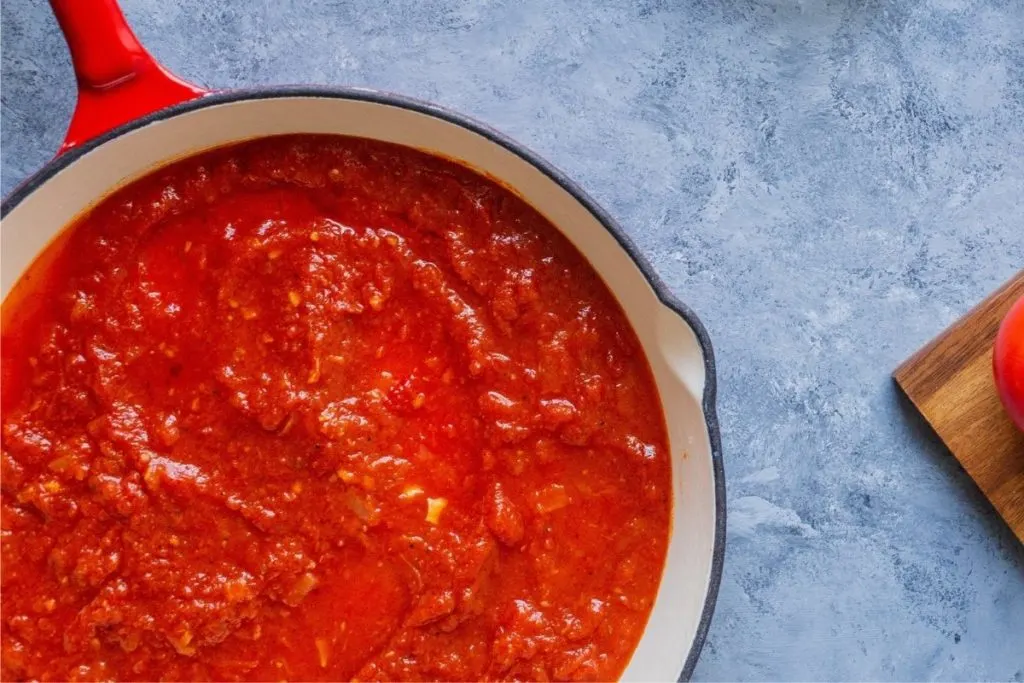
Origin: Throughout France | Ingredients: Dry red wine, basil, olive oil, garlic, crushed tomatoes, grated onion, and oregano | Popular Dishes: Red wine pasta. Lasagne, pizza sauce, dip for grilled cheese
Red wine is a pasta sauce base that spread throughout the world from France. Incorporating red wine into pasta sauce allows for a wide range of flavor. The higher quality wine you use, the better the sauce will be, so try to cook with a red wine that you would also enjoy drinking. It’s recommended that you select a dry red wine, like a cabernet sauvignon or zinfandel, because it offers the sauce the deepest flavor profile.
Most red wine sauce recipes will only use one cup of wine, allowing you to serve the rest of the bottle with the meal for a nice flavor compliment. Start with the grated onion and garlic. Saute these ingredients until they are caramelized. If you’d prefer a less sharp and tangy flavor, try adding a tablespoon of honey or maple syrup to sweeten the sauce just slightly. Add the tomatoes and wine, then top over noodles of your choice. It’s an easy sauce to make at home.
Taking the Knowledge of Pasta Sauce to the Kitchen
Making pasta sauce at home doesn’t have to be a challenge. Most pasta sauces require few ingredients and minimal prep time. If you’re new to making your own pasta sauce, try something simple like brown butter sauce, marinara, or pesto first. As you get more comfortable, venture toward pasta dishes that use truffle oil. The traditional recipes are nice to try, but don’t be afraid to get creative with your pasta sauces and make one that is perfect for you.
Further Reading
